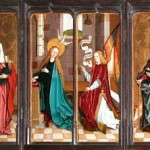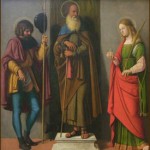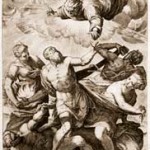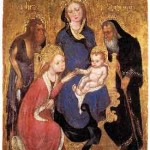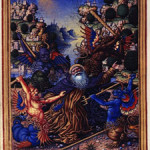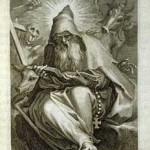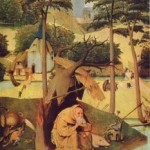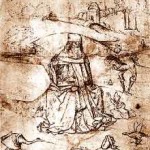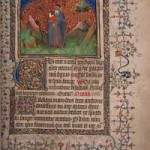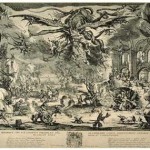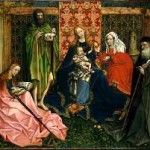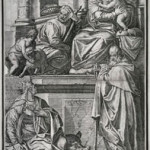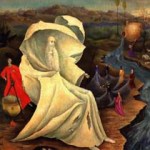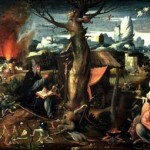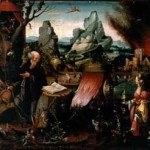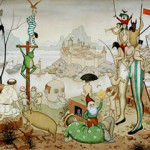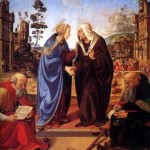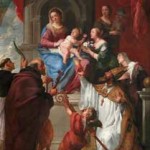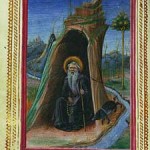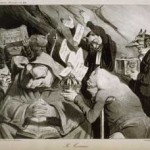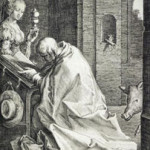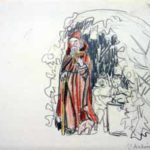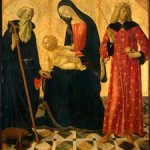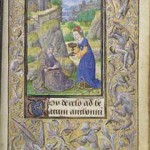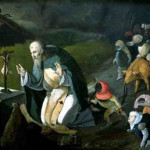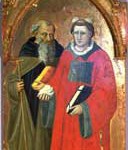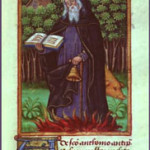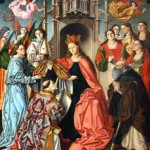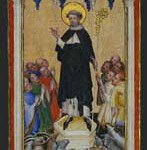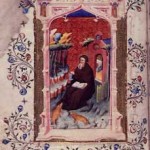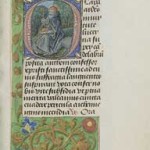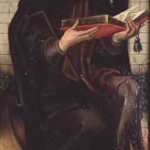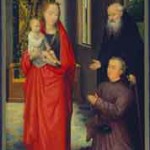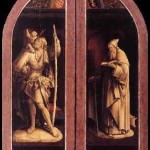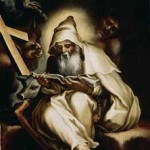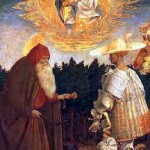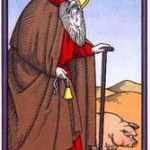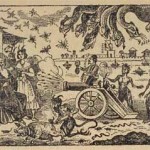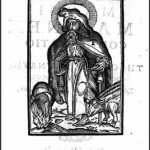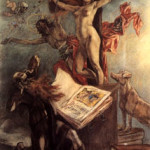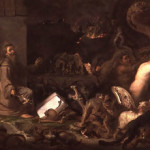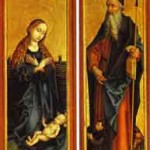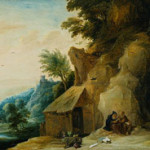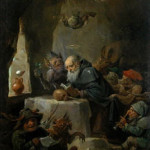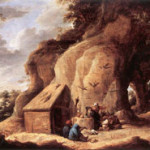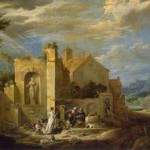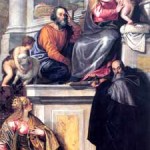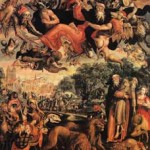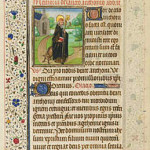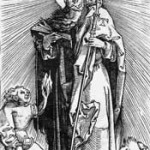an art exhibition featuring St. Anthony and pigs
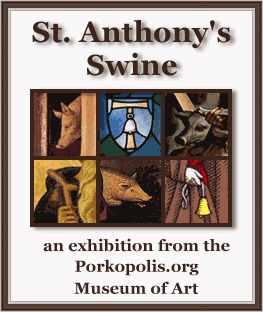
I sing St. Anthony and his fav’rite swine: / Who, strange to tell, like you and I could speak, / When other grov’ling pigs could only squeak.
— Frederick Forrest, (fl. 1766), St. Anthony and his Pig. A Cantata.
The association of St. Anthony (c. 251 AD – 356 AD) with the pig began at least as long ago as c. 1095 with the formation of the Order of Hospitallers who choose St. Anthony as their patron. In the Middle Ages the Order of Hospitallers of St. Anthony specialized in treating diseases of the poor in medieval cities.
The Hospitallers established monasteries, hospitals and shrines to St. Anthony throughout Europe. Those afflicted with St. Anthony’s Fire, a name for an inflammation of the skin due to ergot poisoning, were their most common patients.
The Order of the Hospitallers had the Church’s authorization to support their charities by raising swine. Townsfolk often donated the smallest pig, or runt, from their own pigs’ litters to the Hospitallers who then released the small young pigs to roam about the medieval streets, marked with bells tied around their necks.
These runt pigs became common and persistent beggars to survive (see tantony pig). The survivors were brought back into the fold of the Hospitallers husbandry if they prospered. These pigs provided pork and lard for the Hospitallers and their patients. It is because of this association that St. Anthony is often depicted with a pig at his feet.
St. Anthony & His Swine
Additional information on St. Anthony the Great and pigs
St. Anthony (c. 251 AD – 356 AD) is a Catholic saint and is considered the Father of Christian Monasticism. He is also known as Anthony Abbot, Anthony of Egypt and Anthony the Great,
Anthony is the patron saint and heavenly advocate for amputees; basket makers; hermits & monks; butchers; domestic animals, especially hogs and pigs; swineherds and relief from skin diseases & rashes such as eczema, ergotism (Saint Anthony’s Fire) & erysipelas.
The iconography of St. Anthony’s includes some combination of these attributes: an old man with a long beard, long robes or a monk’s habit with a tau cross stitched onto his chest or shoulder, a bell, a pig, a staff with a tau cross and/or a bell at the top and a brightly burning fire at his feet.
The image and attributes of St. Anthony on the frontispiece of Théophile Raynaud’s In Symbolicam S. Antonii magni Imaginem commentatio, published in Ghent in 1659, is a fine summary.
St. Anthony’s association with the pig began at least as long ago as c. 1095 with the formation of the Order of Hospitallers who choose him as their patron. In the Middle Ages the Order of Hospitallers of St Anthony specialized in treating diseases of the poor in medieval cities. The monks had the Church’s authorization to support their charities by raising swine. It is for this reason that St. Anthony the Abbot is often depicted with a pig at his feet.
The smallest young pigs which belonged to the Order were released to roam about the streets. Marked with bells around their necks, these runt pigs became common and persistent beggars (see tantony pig) in order to survive. Those that prospered and grew were brought back into the fold of the Hospitallers husbandry.
The hospitalliers established monasteries, hospitals and shrines to St. Anthony throughout Europe. Here they cared for the local sick as well as pilgrims. Those afflicted with St. Anthony’s fire, a name for inflammation of the skin due to ergot poisoning, were their most common patients , reflecting the belief that St Anthony could cure that illness.
All the works collected here include pigs, many also depict the Temptation of Saint Anthony. This is an often-repeated subject in the history of art and literature concerning symbolic and supernatural temptations that were inflicted upon Saint Anthony the Great by Satan during Anthony’s time as a hermit in the Egyptian desert.

